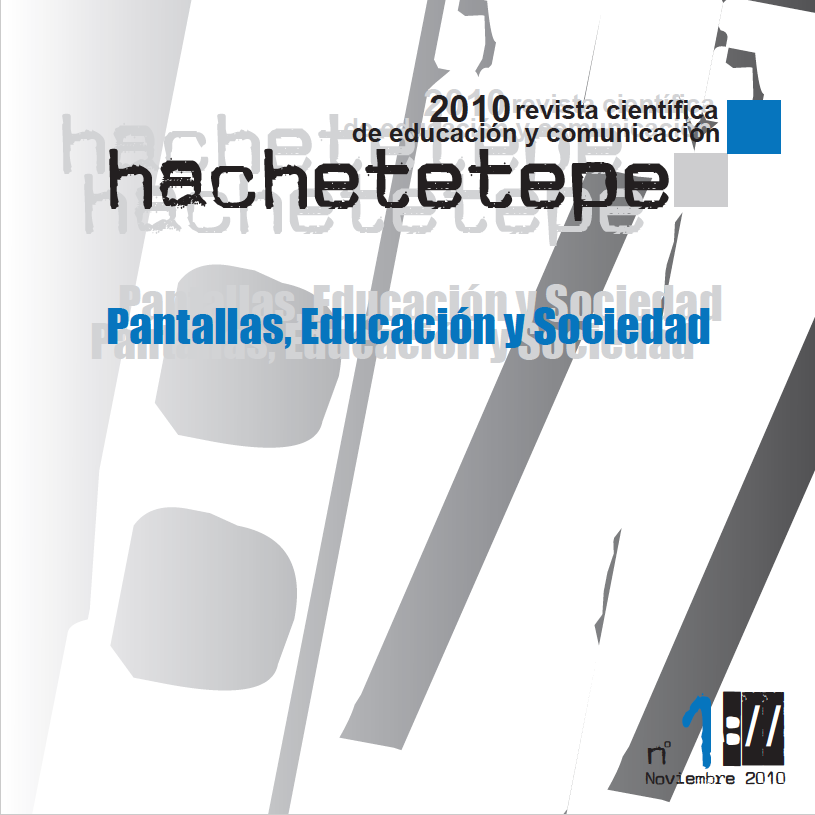Netwoks of relationships and technology

Info
Abstract
The article, with the approach of a descriptive piece of writing, relates four basics elements in university education: the new legislative proposals derived from the Bologna Declaration, the relevance of the workgroup in these new proposals, the leading role of students in the development of this new approach and the descriptive reality of today’s youth, especially in their personal profile. A new legal frame implies that students, together with their personal and social reality, must be the key factors in the renewal of the learning process in university, with the relevance and support of the own student’s reference group
Keywords
Downloads
How to Cite
License

This work is licensed under a Creative Commons Attribution-NonCommercial-NoDerivatives 4.0 International License.
Those authors who have published with this journal, accept the following terms:
- They will retain their copyright and guarantee the journal the right to first publication of their work, which will simultaneously be subject to the Creative Commons Attribution License . They may be copied, used, disseminated, transmitted and publicly displayed, provided that the authorship, url, and magazine are cited, and are not used for commercial purposes. No derivative works are allowed.
- They may adopt other non-exclusive license agreements for the distribution of the published version of the work (e.g., deposit it in an institutional telematic archive or publish it in a monographic volume) provided that the initial publication in this journal is indicated.
- Disseminate your work through the Internet (e.g., in institutional telematic archives or on your website) once the manuscript is accepted, which may lead to interesting exchanges and increased citations of the published work. (See The effect of open access).
Hachetetepé. Scientific journal of education and communication does not charge a fee for the submission of manuscripts or for the publication of its articles.
References
Arriaga, S.; Escolástico, X.; Lavín, I. y Yurrebaso, G. (2010). Estudio sociométrico entre los estudiantes de primero de Psicopedagogía de la Universidad de Deusto. Apuntes de clase (documento inédito).
Arruga I.; Valeri, A. (1992). Introducción al test sociométrico. Barcelona: Herder.
Casanova, M. A. (1991). La sociometría en el aula. Madrid: La Muralla.
Clemente, M. (1989). El test sociométrico aplicado al aula, en Huici Casal, C. (Dir.). Estructura y procesos de grupo. Madrid: UNED; 313-361; tomo 2.
Declaración de Bolonia. (1999). Espacio Europeo de Educación Superior.
Echeverría, J. (2001). Las TIC en educación. Revista Iberoamericana, 24; 17-36.
Fernández Santos, J.S. (2000). Sociología de los grupos escolares: Sociometría y Dinámica de grupos. Universidad de Almería.
Galindo, J. (2002). De la sociedad de información a la comunidad de comunicación. Revista Razón y palabra, 29. (http://www.razonypalabra.org.mx/anteriores/ n29/jgalindo.html) (11-6-10).
INJUVE. (2008). Informe de la juventud en España 2008. Observatorio de la Juventud. Ministerio de Igualdad, Gobierno de España.
MARCO PEDAGÓGICO DE LA UD. (2001). Orientaciones generales. Bilbao: Universidad de Deusto. (http://intranet.deusto.es/rectorado/Innovacion_y_ calidad/marco_pedagogico_ud_-_ud_marko_pedagogikoa. pdf) (11-6-10).
Marqués Graells, P. (2008). Las TIC y sus aportaciones a la sociedad. (http://peremarques.pangea. org/tic.htm) (23-03-08)
Moreno, J. L. (1954). Fundamentos de la sociometría. Buenos Aires: Buenos Aires.
NAVEGANTES EN LA RED. (2010). Asociación para la Investigación de los Medios de Comunicación.
Ovejero, A. (1988). Psicología social de la educación. Barcelona: Herder.
Sierra-Bravo, R. (1988). Técnicas de Investigación Social. Madrid: Paraninfo; 679-699.
Spencer, L.M. y Spencer, S.M. (1993). Competence at Work. New York: John Wiley and Sons.

